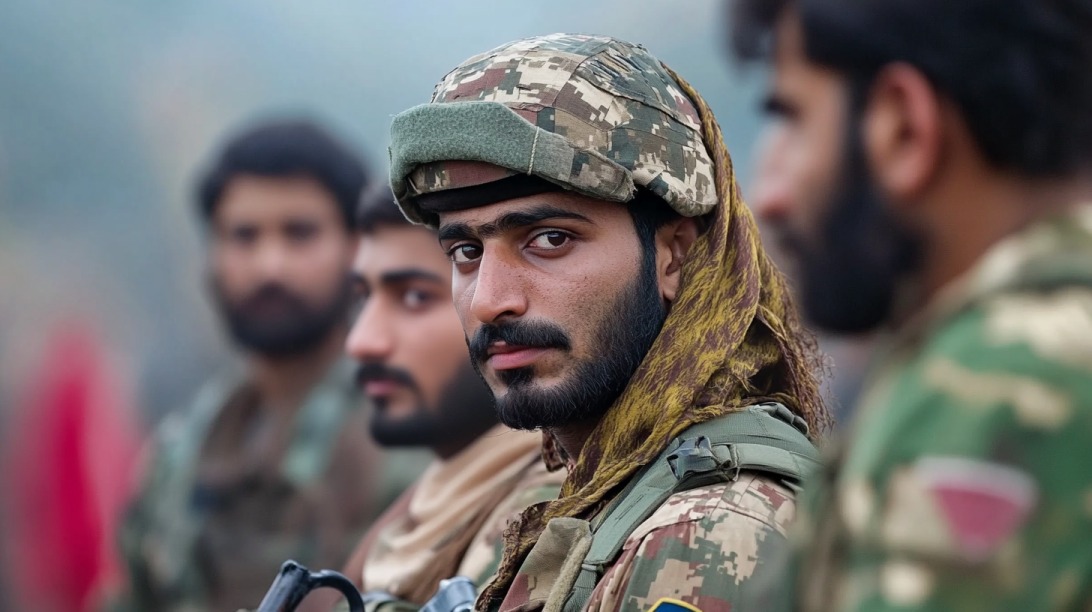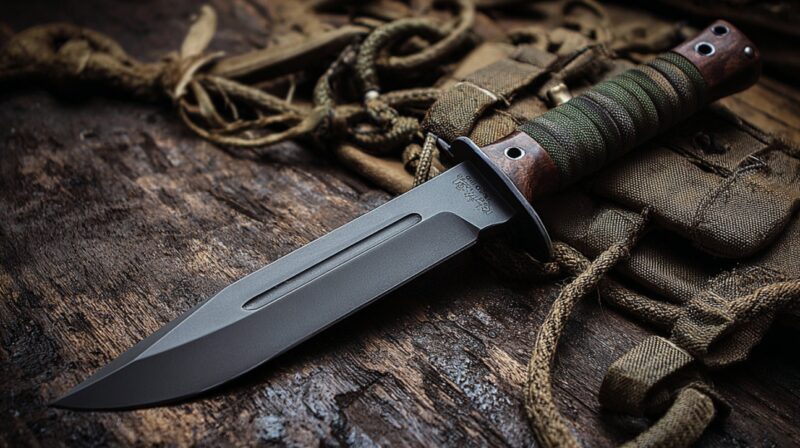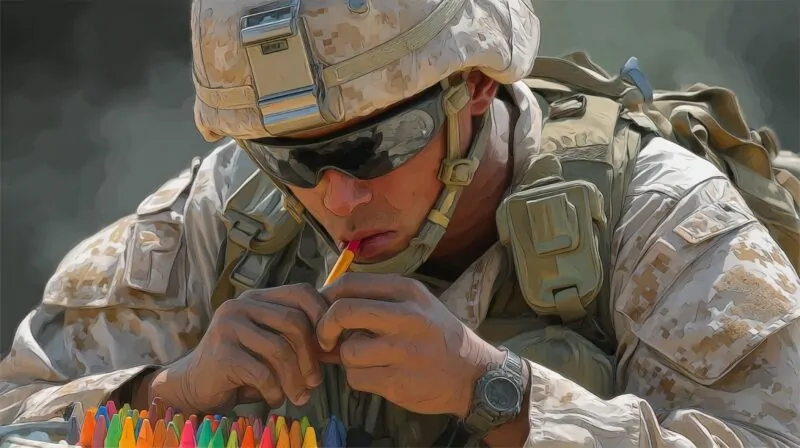Geopolitical conditions in 2025 remain tense across South Asia, driven by unresolved territorial disputes and emerging defense alliances. A critical flashpoint erupted on April 22 with a terror attack in Pahalgam, leading to immediate Indian missile retaliation.
Retaliatory strikes marked a dramatic military escalation, drawing global attention to the subcontinent once again.
Animosity rooted in the 1947 partition continues to fuel confrontations. Decades of warfare, border skirmishes, and proxy conflicts have entrenched hostility between India and Pakistan.
Let’s discuss the most important aspects regarding India and Pakistan’s military strength in 2025.
| Category | India | Pakistan |
|---|---|---|
| Global Rank (GFP) | 4th (PwrIndx: 0.1184) | 12th (PwrIndx: 0.2513) |
| Posture | Dual-front, modernization, power projection | Defensive, mobile, asymmetric tactics |
| Personnel | ~5.1M (1.45M active, 1.15M reserve, 2.52M paramilitary) | ~1.7M (654K active, 550K reserve, 500K paramilitary) |
| Defense Budget | $86.1B (2.3% of GDP) | $10.2B (2.7% of GDP) |
| Modernization | Aircraft, missiles, naval systems, local industry | Drones, EW, tactical arms |
| Air Strength | 2,229 aircraft (513 fighters, 899 helis) | 1,399 aircraft (328 fighters, 373 helis) |
| Air Platforms | Rafale, Su-30MKI, Tejas, MQ-9, S-400 | JF-17, J-10C, TB2, HQ-9 |
| Naval Power | 293 assets (2 carriers, 14 subs) | 121 assets (8 subs, 9 frigates) |
| Naval Strategy | Blue-water, Indo-Pacific, maritime dominance | Coastal defense, chokepoint control |
| Tanks | 3,151–4,201 | 1,839–2,687 |
| Artillery | 3,975+ units, incl. Pinaka, K9 Vajra | 2,629 towed units |
| Missiles | Agni-V, BrahMos, Prahaar, S-400 | Shaheen, Nasr, HQ-9 |
| Drones | Heron MK2, Harop, swarms | Wing Loong II, TB2, Akinci |
| Nuclear Warheads | ~172; No First Use; triad-based | ~170; first-use option; mobile systems |
| Infrastructure | 311 airports, vast roads, 7,000 km coastline | 116 airports, region-based mobility |
| Alliances | Russia, France, USA, Israel, QUAD | China, Turkey |
Military Rankings and Strategic Posture
India maintains a commanding position in global military power, ranked 4th with a Power Index (PwrIndx) of 0.1184 according to Global Firepower. Pakistan, while lower at 12th, remains a formidable force with a PwrIndx of 0.2513.
India operates with a dual-front strategy, prioritizing preparedness for both western (Pakistan) and eastern (China) threats.
- Rapid mobilization
- Deterrence capability
- Extended force projection
Strategic planning revolves around continuous modernization efforts. Indigenous technologies, homegrown defense systems, and integration of advanced assets like Rafale jets, BrahMos missiles, and S-400 air defense systems support this effort.
Pakistan’s military doctrine reflects a fundamentally defensive approach, centered on countering perceived threats primarily from India.

- Tactical-level mobility to quickly reposition and respond
- Rapid response units equipped for agile counterattacks
- Drone-centric asymmetric strategies aimed at precision strikes and surveillance
- Strategic depth planning along its western regions to delay and absorb advances
Pakistan leverages terrain familiarity and decentralized force structures to maximize response flexibility.
Disparity in posture becomes evident in the operational scope. India prepares for multi-theater engagements, leveraging large-scale logistics and long-range strike capabilities.
Manpower and Personnel
India fields a formidable manpower structure, with total military personnel estimated at approximately 5.1 million.
- Active-duty troops
- Reservists
- Paramilitary forces
Such volume reflects an institutional capacity to handle complex multi-domain threats and prolonged engagements.
- Active-duty soldiers: 1.45 million
- Reservists:1.15 million
- Paramilitary forces: 2.52 million
Numerical strength provides India with extensive flexibility. Large-scale troop deployments along border regions, as well as internal security operations, are supported without straining frontline readiness.
The capability to simultaneously manage both conventional operations and irregular warfare is significantly enhanced by sheer volume.
Pakistan maintains a significantly smaller, yet efficient, total force of around 1.7 million personnel. Tactical structure emphasizes rapid deployment and internal security effectiveness.
- Active-duty soldiers: 654,000
- Reservists: Approximately 550,000
- Paramilitary forces: 500,000
Strategic focus in Pakistan is tailored toward responsiveness and flexibility. Quick reaction units and specialization in counterinsurgency are central to operational readiness.
Defense Budgets and Spending
India’s defense budget for 2024 reached $86.1 billion, equating to approximately 2.3% of its GDP. A large allocation, ₹1.8 lakh crore, was dedicated to modernization efforts.
- Acquisition of next-generation fighter aircraft such as Rafale and Tejas
- Expansion of naval strength with submarines and indigenous warships
- Enhancement of missile systems, including BrahMos and Agni series
- Investment in domestic defense manufacturing and R&D facilities
Pakistan, in comparison, allocated $10.2 billion for its military, accounting for 2.7% of its GDP.
Rising regional tensions have compelled Islamabad to prioritize military procurement and readiness.
- Expansion of drone fleets, particularly Bayraktar TB2 and Wing Loong II
- Upgrades to electronic warfare capabilities
- Increased funding for rapid response units and tactical systems
- Strengthening defense ties with China and Turkey for joint development projects
India’s economic scale enables sustained investment in future-proof technologies, driven by both indigenous initiatives and international collaborations.
Long-term procurement strategies are supported through multi-year contracts and diversified sourcing, reducing dependency and improving force interoperability.
Pakistan, facing financial constraints, emphasizes value-driven defense solutions. Strategic alignment with China and Turkey allows cost-effective access to advanced systems otherwise difficult to acquire. Budget planning in Islamabad reflects a focus on agility and rapid deployment, rather than a comprehensive overhaul.
Air Power Comparison
Air Force: India operates 2,229 aircraft, including 513 fighter jets (Rafale, Su-30MKI, Tejas), 899 helicopters, and 6 aerial tankers. Pakistan has 1,399 aircraft, with 328 fighters (JF-17, F-16) and 373 helicopters. India’s fleet is larger and more diverse.
— Office of Dap’r (@DapperG174904) May 7, 2025
Both countries maintain significant air power capabilities in 2025, but critical disparities in quantity, technology, and operational philosophy shape their respective doctrines
India
Exercise Desert Flag X
The IAF alighted at Al Dhafra, UAE for #DesertFlag X with
MiG-29s and Jaguars ready for joint drills in the desert skies—training alongside eleven friendly nations.
Precision, partnership, and power in motion.#HarKaamDeshKeNaam #IAF#BondBeyondBorders… pic.twitter.com/S2VEARpJiP— Indian Air Force (@IAF_MCC) April 21, 2025
India holds a substantial numerical and technological advantage, while Pakistan emphasizes flexibility and strategic coordination with key allies.
India’s air force operates a total of 2,229 aircraft, comprising a mix of fighters, helicopters, transport planes, and surveillance assets. A focus on multirole platforms allows for flexibility in both offense and defense.
- 513 fighter jets – primary air superiority assets like Rafale, Su-30MKI, and indigenous Tejas
- 899 helicopters – including Apache attack helicopters and ALH Dhruv for combat and logistics
- Strategic aircraft supporting transport, electronic warfare, and aerial refueling operations
India’s strength lies in technological integration. Partnerships with France, Israel, Russia, and the United States enhance capabilities.
- Rafale fighters – equipped with Meteor missiles for long-range engagements
- MQ-9 Predator drones – U.S.-supplied UAVs for ISR and precision strikes
- Heron drones – Israeli systems used for persistent surveillance and loitering missions
- S-400 missile defense systems – Russian-made platforms for high-altitude airspace control
Pakistan
PAF CONTINGENT LANDS AT KSA TO PARTICIPATE IN EXERCISE SPEARS OF VICTORY-2025 pic.twitter.com/Nn6rQfIQ37
— DGPR (AIR FORCE) (@DGPR_PAF) January 18, 2025
Pakistan operates 1,399 aircraft, significantly fewer than India. However, its air force is structured for agility and defensive operations.
- 328 fighter jets – JF-17s co-developed with China and J-10C multirole fighters
- 373 helicopters – utilized for troop mobility, tactical support, and counterinsurgency
- Reconnaissance drones and air support platforms aimed at rapid threat response
Pakistan’s strategy focuses on collaboration with China and Turkey, enabling cost-efficient technological upgrades. Key systems in use are:
- Bayraktar TB2 drones – Turkish UAVs employed for surveillance and precision strikes
- J-10C jets – capable of advanced avionics and multirole combat
- HQ-9 air defense systems – sourced from China for area-based aerial threat interception
Naval Strength
India’s navy continues to evolve as a force with global projection in mind. With a total of 293 naval assets, India has built a formidable blue-water navy.
The fleet includes two aircraft carriers, INS Vikramaditya and INS Vikrant, providing extended operational range and air superiority at sea.
Submarine power consists of 14 submarines, including nuclear-powered ballistic missile submarines like INS Arihant, enhancing strategic deterrence.
- Destroyers equipped with advanced missile systems
- Corvettes for close-range engagements and patrol duties
- Frigates designed for anti-air and anti-submarine roles
- Amphibious transport docks to enable expeditionary operations
- Maritime reconnaissance aircraft and drones for sea-based surveillance
Strategic emphasis lies on ensuring maritime dominance in the Indian Ocean and maintaining a forward presence in the Indo-Pacific. Regular joint exercises with allies, enhanced logistics at strategic ports, and ongoing indigenous warship construction underline this commitment.
In contrast, Pakistan’s naval fleet comprises 121 assets, reflecting a doctrine built around regional defense.
Among these are 8 submarines, a central component of Pakistan’s naval deterrence strategy, and 9 frigates equipped with modern sensors and missiles.
- Missile boats tailored for fast, stealthy coastal strikes
- Anti-submarine helicopters for localized defense
- Support vessels optimized for short-range logistics
- A growing network of coastal installations and surveillance outposts
Operational priorities focus on securing maritime routes in the Arabian Sea, countering Indian naval power asymmetrically, and chokepoint control near strategic locations like the Strait of Hormuz.
Ground Forces and Land Power

India’s ground forces operate with both numerical advantage and strategic depth. Deployment includes between 3,151 and 4,201 main battle tanks, positioning it for dominance in armored warfare.
Ground artillery exceeds 3,975 towed units, which are reinforced by self-propelled systems and mobile missile launchers designed for adaptability across terrains.
Mechanized infantry and armored divisions are built for flexibility and speed. Their configurations support high-altitude combat and simultaneous engagement across multiple fronts, particularly along the western and eastern borders.
- Main Battle Tanks: 3,151–4,201 units
- Artillery Units: 3,975+ towed systems, along with self-propelled and mobile platforms
- Missile Systems: Agni-V ballistic missiles, BrahMos cruise missiles, Prahaar tactical systems
- Artillery Modernization: K9 Vajra howitzers, Pinaka multiple rocket launchers
Pakistan fields a capable but leaner land force. Tank inventory ranges between 1,839 and 2,687 units, backed by 2,629 towed artillery pieces. Ground operations rely heavily on rapid response units and infantry brigades trained for agile, defensive combat, particularly across rugged or urban environments.
- Main Battle Tanks: 1,839–2,687 units
- Artillery Units: 2,629 towed systems
- Missile Systems: Shaheen series and Nasr tactical systems with mobile deployment platforms
- Technology Sources: Heavy integration of Chinese missile development and support
Nuclear Capabilities
India and Pakistan maintain robust nuclear arsenals that shape their strategic decisions and crisis responses. Both nations continue to build delivery systems and doctrinal frameworks that influence regional stability.
India possesses an estimated 172 nuclear warheads. It follows a “No First Use” (NFU) policy, aiming to avoid initiating a nuclear conflict while retaining the capability to retaliate effectively.
- Nuclear policy: Declared No First Use
- Estimated warheads: 172
- Delivery systems:
- Submarine-launched ballistic missiles (INS Arihant)
- Road-mobile Agni series missiles
- Air-launched nuclear platforms
- Deterrence focus: Diversified, survivable second-strike capability
Pakistan holds around 170 nuclear warheads and adopts an ambiguous nuclear policy.
- Nuclear policy: First-use remains an option
- Estimated warheads: 170
- Delivery systems:
- Mobile, land-based launchers
- Tactical nuclear weapons (Nasr system)
- Deterrence focus: Rapid deployment, survivability, short-range battlefield response
Real-time Conflict Dynamics
In May 2025, military tensions surged following a terror attack in Pahalgam in April. India executed targeted missile strikes on insurgent facilities across the Line of Control (LoC).
Pakistan claimed defensive success, intercepting several missiles using its HQ-9 air defense system and local interceptors.
During the conflict escalation, both nations utilized advanced drone platforms. Each side sought precise hits and real-time battlefield intelligence. Airspace monitoring and tactical strikes reflected rapid adaptation to modern warfare techniques.
- United States and regional powers pushed for restraint
- United Nations urged de-escalation
- Backchannel diplomacy involved neutral states mediating communication
As a result, both governments agreed to a ceasefire. Several outcomes emerged:
- Urgency for updated communication protocols between nuclear states
- Renewed focus on missile defense systems
- Recognition of how drone warfare can rapidly escalate conflict
Summary
India holds a considerable advantage in conventional military terms. Superiority in funding, equipment diversity, and strategic partnerships supports long-term modernization and global power projection.
Large personnel reserves and superior infrastructure add further depth to operational readiness. Pakistan compensates with focused asymmetric strategies, tactical flexibility, and strong alliances with China and Turkey.
Kashmir remains the most volatile trigger point. Terror incidents and border skirmishes continue to challenge diplomatic efforts and elevate military alertness on both sides.
Any future confrontation will likely feature high-tech platforms, real-time intelligence, and rapid escalation potential.
Related Posts:
- What is the Role of Drones in India-Pakistan Conflict?
- How Old Can a Woman be to Join the Military? Joining…
- How the XVIII Airborne Corps Leads the Army’s Quick…
- What Are the Current Swing States in 2025, and How…
- Your Guide to the VA Disability Rates 2025 and Changes
- The US Incarceration Rates in 2025 - US Crime,…







